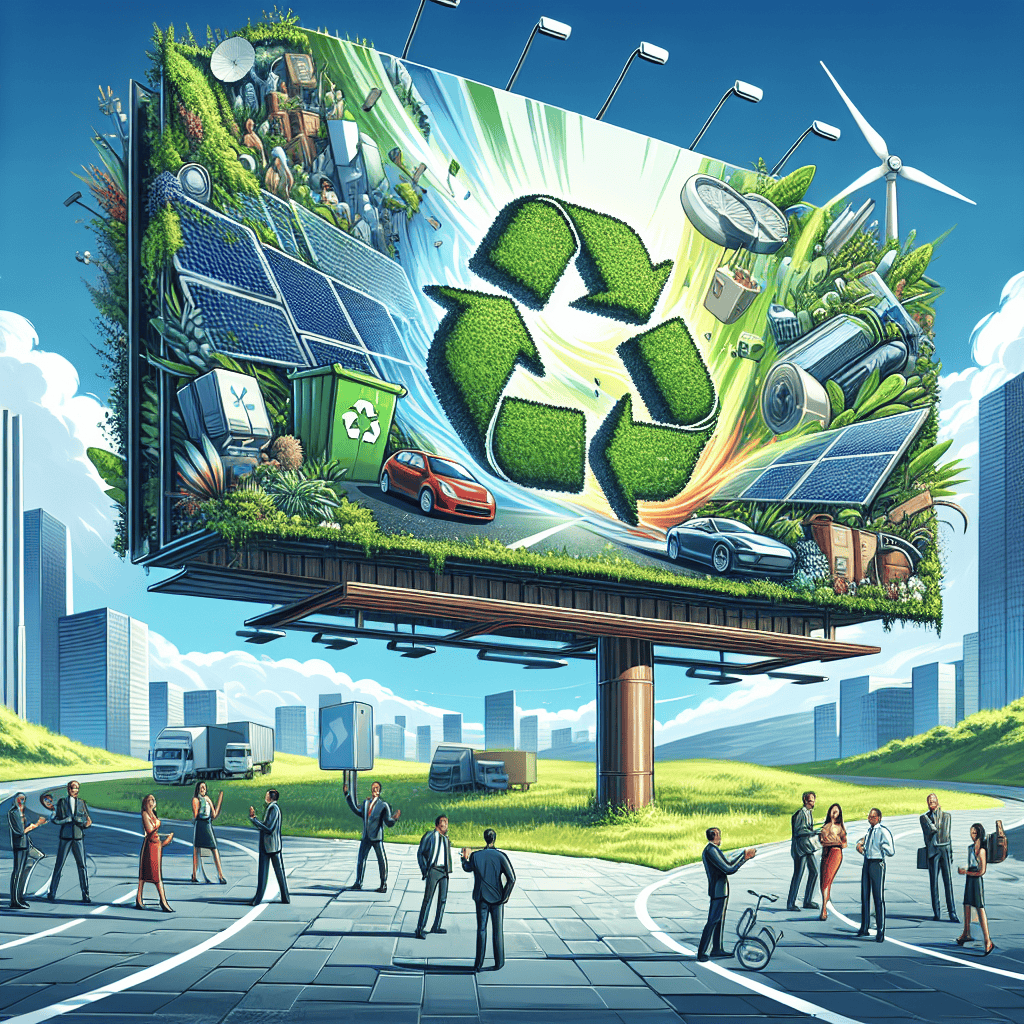The Rise of Sustainable Advertising
In recent years, sustainability has moved from niche marketing to a critical element in the advertising landscape. As consumers become increasingly aware of environmental issues, they’re seeking brands that align with their values. This shift has led to the emergence of sustainable advertising, which emphasizes eco-friendly practices and social responsibility.
Consumer Demand for Green Marketing
Today’s consumers, particularly millennials and Gen Z, are more conscious than ever about their purchasing choices. A Nielsen report shows that 73% of global consumers would change their consumption habits to reduce environmental impact. Companies are responding by integrating sustainability into their marketing strategies. Brands that proactively promote their sustainability initiatives are more likely to attract and retain customers.
Innovative Approaches to Advertising
As sustainability becomes a priority, marketers are employing innovative approaches to communicate their green initiatives. Brands like Coca-Cola and Unilever have adopted transparent storytelling to build trust and highlight their sustainability efforts. For instance, Coca-Cola’s “World Without Waste” campaign focuses on its commitment to recycling and reducing plastic waste.
Furthermore, brands are leveraging social media to share their efforts. Interactive campaigns, user-generated content, and targeted ads focusing on sustainability can create community engagement and a loyal customer base.
The Role of Influencer Marketing in Sustainability
Influencer marketing is an effective tool within the realm of sustainable advertising. Influencers often have established credibility with their followers, making them ideal advocates for eco-friendly brands. Collaborating with influencers who share an authentic commitment to sustainability can elevate a brand’s message. Brands like Patagonia have successfully used this strategy, engaging influencers to promote sustainable practices actively.
Challenges Faced by Sustainable Advertisers
Despite the benefits, sustainable advertising presents unique challenges. Brands must ensure authenticity in their messages; otherwise, they risk being labeled as “greenwashed.” This term refers to companies falsely portraying their products or practices as environmentally friendly. Hence, every claim must be backed by solid evidence.
Moreover, the cost of implementing sustainable practices can be high. From sourcing eco-friendly materials to switching to renewable energy, businesses must weigh the financial implications against long-term gains.
Technological Innovations Supporting Sustainability
Technology plays a crucial role in enabling sustainable advertising. Advancements in data analytics and artificial intelligence allow brands to target consumers more effectively without compromising environmental ethics. For instance, programmatic advertising can reduce waste by ensuring ads reach the right audience with minimal resource usage.
Moreover, technologies such as blockchain can contribute to transparency in supply chains, reassuring consumers that brands’ sustainability claims are genuine. By leveraging such technologies, brands can enhance their credibility while promoting eco-friendly products.
Case Studies: Brands Leading in Sustainability
Several brands have successfully integrated sustainability into their advertising strategies:
- Patagonia: Known for its environmental activism, Patagonia has built its brand around sustainability. The company’s “Don’t Buy This Jacket” campaign encourages consumers to think twice about consumption, emphasizing repair over replacement.
- Ben & Jerry’s: This ice cream brand has been vocally supportive of social justice and environmental issues. Their campaigns often highlight their commitment to sustainable sourcing, climate change activism, and fair trade practices.
- IKEA: The furniture giant has launched initiatives such as the “IKEA Sustainability Strategy,” which aims to become climate positive by 2030, outlining comprehensive advertising strategies that align with these goals.
The Future of Advertising: A Sustainable Perspective
The future of advertising indisputably lies in sustainability. As more consumers demand eco-friendly practices from brands, companies will need to adapt or risk losing relevance. Sustainability is not merely a trend but a long-term strategic approach that could redefine the industry.
Marketers must stay ahead by continuously exploring new ways to integrate sustainability into their advertising efforts. Collaborating with NGOs, investing in sustainable technologies, and fostering consumer engagement will be crucial for brands aiming to thrive in this evolving landscape.
Conclusion: Embracing the Green Revolution
In conclusion, sustainability is not just a fleeting trend but a fundamental transformation in the advertising landscape. As consumers increasingly demand transparency and eco-conscious practices, brands must align their marketing efforts with these values. By embracing innovative strategies, utilizing technology, and addressing the challenges of authenticity and costs, businesses can forge genuine connections with their audience. The green revolution in advertising is here, and those that adapt will not only survive but also thrive in a world that values sustainability.
USA Marketing Pros is your go-to partner for effective web design, SEO, and digital marketing services. Based in Arlington, VA, we proudly serve businesses across Northern Virginia and the greater Washington, DC area. Contact us today to see how we can help your business grow at (202) 888-5895 or visit us at 701 12th St S, Arlington, VA 22202.
Searching for Google, Facebook, or Instagram Pay-Per-Click Advertising Management? View our top-rated PPC Advertising Services
Discover all our Digital Marketing Services
Book a Advertising Strategy Call




0 Comments